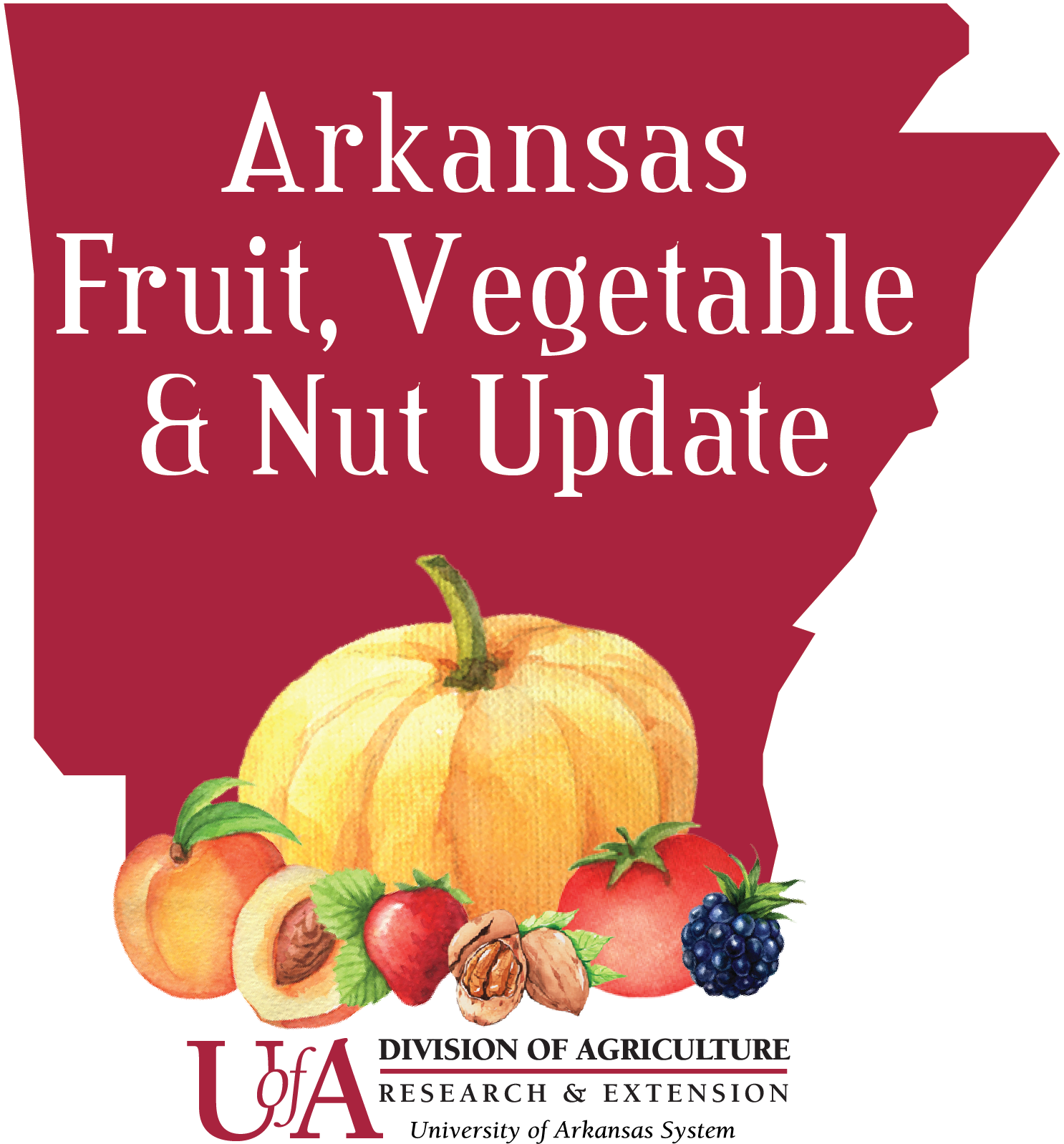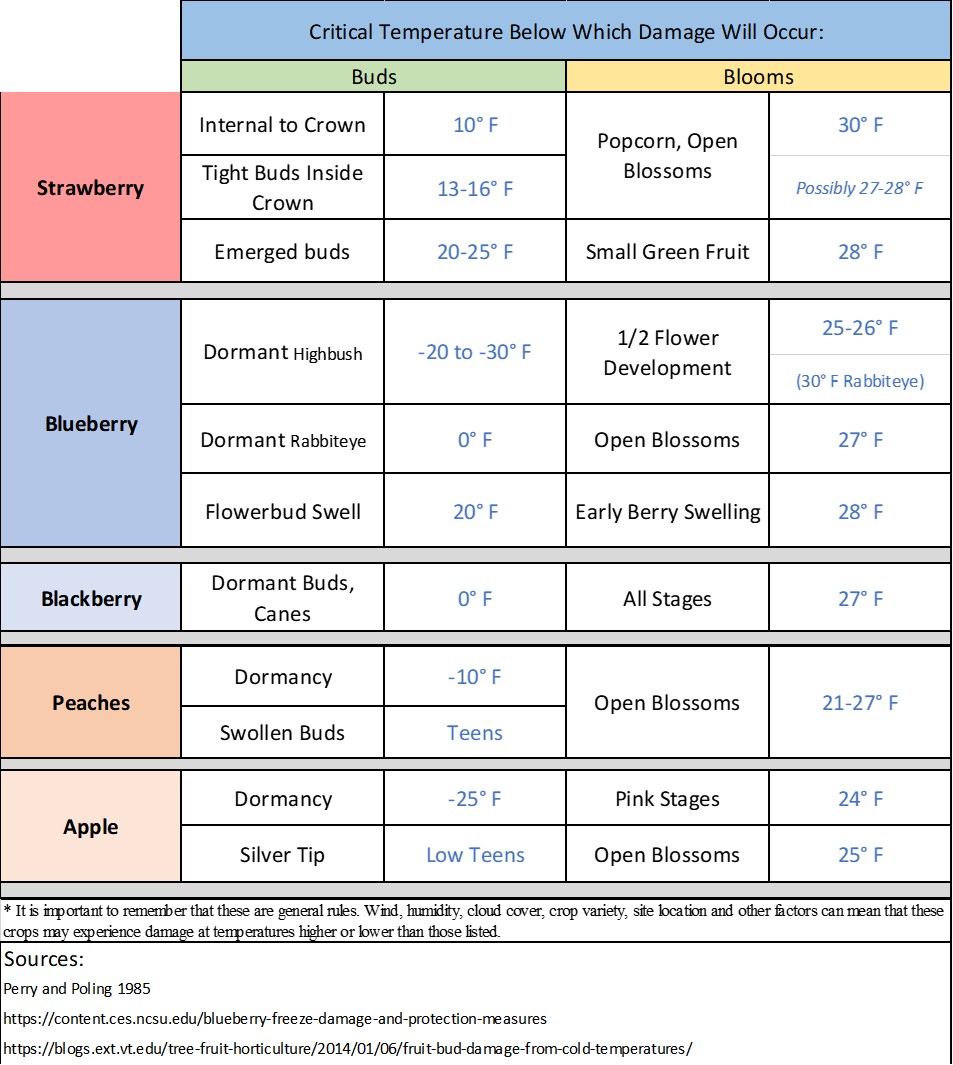
Upcoming Cold Weekend Temperatures
It has been a wild spring thus far for weather. We got about 500-600 chill hours (between 32 and 45 model) in many parts of the state by late January. Then warmer than average temperatures throughout February meant many plants assumed spring had begun and plants started flowering several weeks early.
We are now in a situation where strawberries, blueberries, peaches and other fruit crops are flowering in some parts of the state. This weekend temperatures at or below freezing are expected in addition to possible snow and sleet across the state.
What does this mean for these crops? And is there anything you can do to try to save blooms?
There are several factors to consider. Below is a chart I put together with critical temperatures at which different stages of our major fruit crops experience cold damage. It is important to note that cold tolerance decreases as dormant buds and closed buds develop into open flowers. Open flowers are generally the stage most susceptible to cold damage. It only takes a few minutes below these critical temperatures for damage to occur. Commercial growers may want to invest in specialized thermometers to measure bloom temperature because air temperature and the temperature at canopy or flower level can vary by several degrees.
In many parts of the state and with the current forecast it is expected that many open flowers will likely be lost, but closed buds may be able to survive. In many places only very early blooms are out right now on strawberries, and these may be lost at this point without too much concern for total yields later in the season. The bigger concern will be protecting buds that have not opened which are hardy to about 20 F.
Considerations of crop stage of development, forecasted weather (low temperatures, wind, precipitation, etc.) and what options are available to the grower should be used to determine if the grower will attempt to frost protect or assume some bloom loss.
Over-head irrigation and row covers are both options to try to save open blossoms but won’t work for all crops. Overhead irrigation is used when freezing temperatures are expected and is based on the idea that a layer of ice will protect the blossoms from colder temperatures because water gives off heat as it freezes. This method requires precision in timing as temperatures decrease and requires the application of lots of water. Caution should be used with this method on blackberries and fruit trees because of the added water weight that can result in breakage to canes or branches. Overhead irrigation is only recommended when more than 10% of total blooms are expected to be lost. This method may provide protection when temperatures drop to the low 20s, but winds (greater than 8-10 mph) can make this method in-effective. Work in North Carolina indicates that where high winds will occur overhead irrigation on-top of row covers may be the best option for strawberry growers to protect open blossoms down to the low 20s. This method is also only recommended for experienced growers who have special bloom temperature thermometers, the ability to monitor the relative humidity and the equipment to keep the water running until temperatures rise again.
Row covers are a good option for strawberries due to the crop being close to the ground and plants being smaller. Row covers can provide several degrees (2-5° F) of temperature buffer overnight if they are applied early in the day so that heat can build up underneath the row cover prior to colder night temperatures. A standard weight for row covers is 1.0 oz., but 1.5 oz. provide extra protection. The issue with using row covers this weekend will be rain. Wet row covers provide no freeze protection and row covers freezing to the plants should be avoided as this can lead to further crop damage. Also depending on your local forecast, temperatures may drop so low that row covers may not be able to save open blossoms. However, snow on top of a row cover may provide additional freeze protection and insulation. Growers who have strawberries inside of tunnels may want to consider applying row covers inside the tunnel for added protection.
Again it is important to consider the amount of total crop loss that stands to be lost from a given freeze event, and if you will be able to raise the temperature to an adequate degree to save any blooms with your chosen frost protection method before deciding to frost protect.
After the weekend passes cold damage on open flowers and emerged buds will become evident within a few days. Damage to look for is ‘Black eyes’ or where the center of flowers and buds turn black. No fruit will develop from these damaged buds or flowers. In some cases partial damage will result in misshaped fruits. Next week I will send an update on how to identify damage in closed buds and open flowers.
